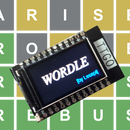Introduction: Make a Laser Cut Cardboard Box
I often have to send parcels by mail or by carrier, and therefore I need boxes. As the dimensions must fit the content, I often can't find the exact box dimensions I need, so I decide to make them by myself.
And what is better for that than using a laser cutting machine? I'm sure to have the exact size I need, straigth cuts, and even folding lines.
Supplies
To make your own laser cut cardboard boxes, you need:
- A laser cutter: I use a 100W CO2 laser cutter from a nearby fablab,
- Cardboard: I recycle any packaging I find: large appliances, TVs, furniture, etc. There is a bike store near my home that often throws away boxes, which I give a new life to,
- Utility knife,
- Large adhesive tape,
- A computer running Python and Lightburn.
Step 1: Python Program
I first looked online to see if there already exists any means of creating cutting templates for cardboard boxes. Surprinsingly, there are many that I could use, and I tried a few of them.
But I found them too complex for my needs, so I decided to make my own, very simplified but suited to my needs. It is a short Python script that generates a file that is readable using the Litghtburn laser cutter control software.
Lightburn reads files that describe both the geometry of the object to be cut AND the cutting parameters, such as
- Laser power (0 - 100%)
- Cutting speed
- PWM (Pulse-width modulation): this is used to create folding lines (see below)
The file looks like an xml file: Extensible Markup Language (XML) is a markup language that defines a set of rules for encoding documents in a format that is both human-readable and machine-readable. After saving it in a dedicated folder, I open it using Lightburn, select the shape of the box, and cut it with the laser cutter.
Step 2: Generate the Box Geometry
Download the 3 files and put them in a given folder. Edit the python file and modify the first line:
path = "D:\\Lightburn\\Cartons\\"
to put the path of the folder. All the created files will appear in this folder as well. Their name should begin with 'Box' followed by the dimensions and the extension '.lbrn'.
The python script generates 2 box geometries: landscape and portrait style. Choose the one you prefer, according to the dimension of your cardboard, and send it to the laser cutter. The laser power is adapted for the 100W CO2 laser that I use. If your laser's power is lower, you may have to change this accordingly. For example, if you use a 80W laser, you will have to divide the power value by 0.8
Step 3: Cutting and Folding the Box
Set the distance between the laser head and the cardboard. To be sure to cut through the cardboard, even if it is a thick one, I usually reduce this distance by 1 or 2 mm: this means that the laser is focused inside the cardboard thickness, or even at the bottom side.
Execute the cut: don't forget to close the lid because the laser generates a lot of smoke during the cut. It begins by engraving the dimensions of the box on the cardboard: this is useful if you cut several boxes in a row, to better find them afterwards. Then the external parts are cut, and finally, the folding lines.
Folding lines use PWM settings of the laser cutter (see 'Perforation mode' in Lightburn): the laser machine makes a bee-like noise at this stage, but do not worry about that...
Perforation Mode
If you are trying to cut fold lines in card stock, stitch holes in leather, or just make dashed lines, perforation mode allows you to choose the distance to cut, followed by the distance to skip.
Here the settings are 0.05 Cut and 0.20 Skip.
If the cardboard is too thick, you may have to use the utility knife to finalize it : just cut through the lines that were already started by the laser cutter, and you are done.
To fold the box at the fold lines, place the template with the fold line along a table edge and fold it. This will prevent damage to the fold line, which can be a bit fragile.
Once filled, when you close the box, use the tape to reinforce the corners.
EDIT : Another one I did this morning using thinner cardboard. The edges are much more precise than for the thicker one. But the box is a little more fragile, I use more tape to reinforce it.
EDIT2: If the cardboard is thick, you may want to double the paths of the laser. To do this, double click on the parameters of the layers ("Cuts/Layers" window) and increase the "Number of passes" to 2. Then click OK.

Participated in the
Laser Challenge














